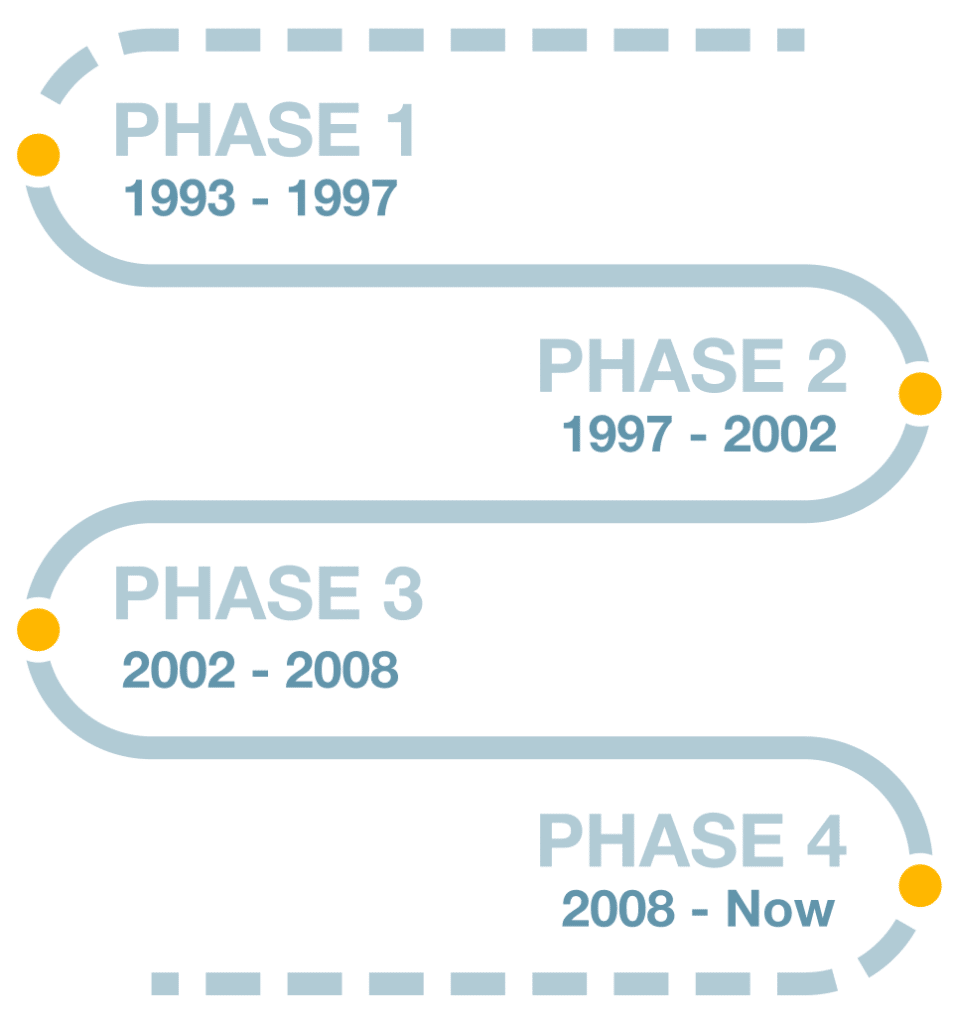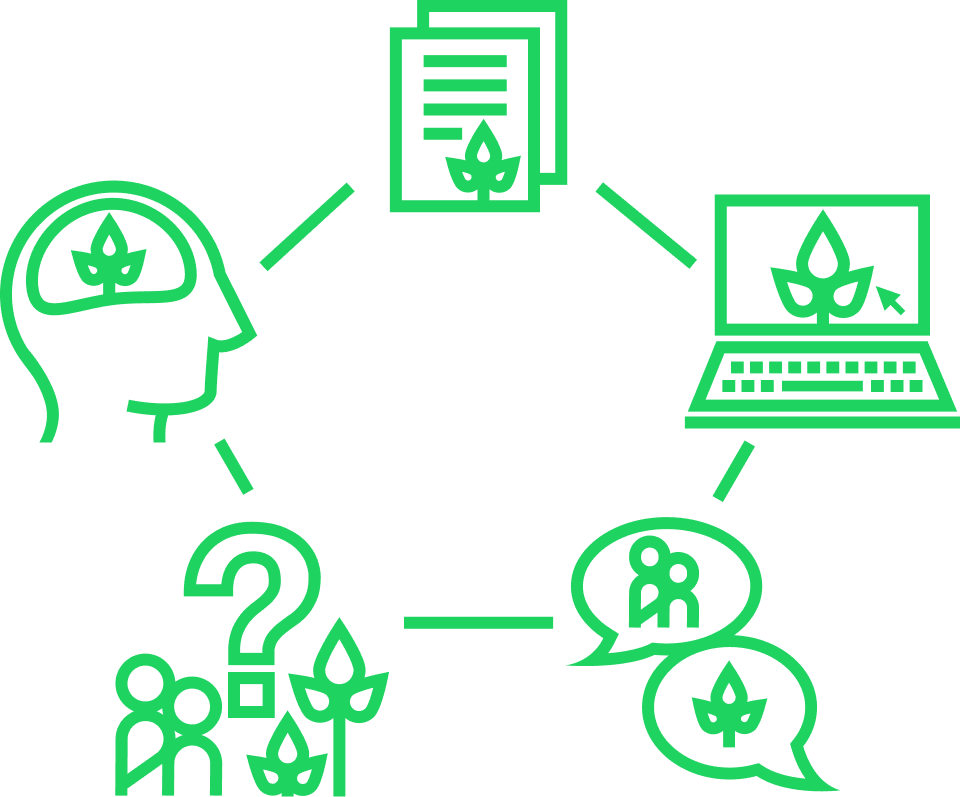Who we are

INECC is a national network of organisations and individuals, who connect on the issue of climate change from the perspective of marginalised communities. It was initiated in 1996 by a few development practitioners in India, who saw the link between the climate crisis and the larger issues of sustainable development and social justice.
INECC works to bring climate change and sustainable development concerns of the marginalised majority and bring their voices into policy dialogues.
 Vision
Vision
To be an effective voice highlighting climate change and sustainable development concerns of the pro-poor towards ensuring an equitable climate response.
 Mission
Mission
To bring forward and help implement locally relevant and equitable climate solutions that reduce carbon footprint and foster sustainable development as opposed to mainstream ecologically destructive development processes.
Why ethics in climate change?
Climate Change affects all of us, particularly the poor and marginalized communities. Our actions are responsible for the consequences that our future generations have to face. Our ethics, values, convictions and lifestyles play a major role in augmenting the climate crisis.
The dominant development paradigm has promoted a notion of the ‘good life’ that is based on unethical visible consumption and high energy use. Trying to solve the crisis and redefine the ‘good life’ without rethinking our ethics, values and convictions will not work. What is needed is a fresh way of looking at happiness and the ‘good life’ if we are to slow down climate change. These are ethical choices that need to be a pivotal point of discussion.
Governance structure
Initiatives for New Ecological Community Concerns is a registered body (registration number 119/2010, dated March 10, 2010) that serves as the legal holder of the network. The network comprises of an Executive Committee and the General Body. The Executive Committee comprises of seven members, which is mandated by the General Body to decide on the network‘s strategies, programmes and policies. The network is driven by the INECC team comprising of 19 members from across 10 states and 5 ecosystems.
INECC Members
INECC functions with the help of the Executive Committee, the Steering Committee, the General Body and the Network.
Executive Committee

Priyadarshini Karve
President
Director, Samuchit Enviro Tech; Pune, Maharashtra

Siddharth D’Souza
Treasurer
Executive Director, LAYA; Visakhapatnam, Andhra Pradesh
Steering Committee
To make the decision process more inclusive and not limiting to the Executive Committee it was decided to include two members from the General Body to participate in the Executive Committee meetings as special guests.
General Body
Sheila Benjamin
Director, South Central India Network for Development Alternatives (SCINDeA); Yelagiri Hills, Tamil Nadu
Dominic D’Souza
Consultant, LAYA; Visakhapatnam, Andhra Pradesh
INECC Network
- PRATYeK, New Delhi
- Watawaran – Mumbai, India
- Numer8 – Mumbai, India
- iPartner – Delhi, India
Our history
INECC’s rich and evolving journey began in the early 1990’s, and continues to grow. Our early works used a Sustainable Development perspective to situate the realities of Climate Change within the Indian rural and tribal context. This new perspective was strengthened with diverse grassroots engagements within various ecosystems communities across the country.
INECC gradually found itself being one of the few voices on equity and justice in Climate Change not only in the national but international platforms as well. Thus, “Peoples’ Voices in Policy Choices” has come to guide all of INECC’s work relating to the micro (people) – macro (policy) realm.

Our Sustainability Efforts

Just as all of us are impacted by Climate Change at various levels, the causes of Climate Change are a result of our collective action and inaction.
With this realisation, as an organisation that values climate action, we at INECC took a moment to reflect on our own practices and processes. We connected with a Design Strategist – Charlene Sequeira, keen on bringing sustainability to our organisation processes and communication to figure out how we could “walk the walk, and talk the talk”! This included a mindset shift, looking at our print and digital impacts, collaborating with others, and always asking if there is something more we can do to help address Climate Change.
The Mindset Shift, Collaboration and Questioning
The mammoth task of trying to become sustainable and climate conscious is an imperfect, non-linear process and not a utopian end result. We are on a continuous journey to expand our knowledge and be more sustainable in any way we can. This means that the process often involves making decisions with incomplete information, guided by the principle of ‘Doing the best we can until we know better. Then when we know better, we do better.’
Charlene introduced us to new opportunities to lower our negative impact on the environment that we never really thought about before. These included green-graphic design, eco-printing methods and sustainable UI/UX. We also found Komuhn – our development team who worked collaboratively with us to bring this website alive with a low-carbon footprint.
At the broadest level, our sustainable decision making process constantly involves reviewing the following:
- What is the main objective/purpose?
- To fulfil that purpose, in the best possible way, what is needed versus what is nice to have?
- If something is needed, how can we lower any negative impact it might bring about in the immediate and distant future, and how can we increase its positive impact for the people and the planet?
- How do we balance the decision of choosing the most eco-friendly option, and what we can afford to do in terms of time and money?
Green-Graphic Design
- What is the main objective/purpose?
- To fulfil that purpose, in the best possible way, what is needed versus what is nice to have?
- If something is needed, how can we lower any negative impact it might bring about in the immediate and distant future, and how can we increase its positive impact for the people and the planet?
- How do we balance the decision of choosing the most eco-friendly option, and what we can afford to do in terms of time and money?
Green graphic design is more than choosing recycled paper and making posters about the effects of climate change. Practicing green-graphic design, prioritizes the environment throughout the design-decision making process.
Designing the thing: Go paperless. Does it really need to be printed?
Designing the size and format: Design using standard paper sizes that will reduce the amount of paper being wasted when it is trimmed. Work with your printers to figure it out.
Printing – material, inks, and processes: Print less. If you need to print, choose sustainable, responsibly sourced paper, paper from more sustainable plants, or post-consumer recycled paper. Print less surface area. Use water soluble, non-toxic, non-petroleum based inks like vegetable inks. Printing digitally (compared to off-set printing) is environmentally less harmful. Work with your printers to find out what is possible with the machines they have.
Text and Images: Use less text and big images. Edit text and use line drawings and other minimalist styles, because you can say more with less.
Fonts: Not all fonts are equal. Some fonts like Ryman Eco are better for the environment because they are designed to use less ink. The company Ecofonts provides software installed in the printers to reduce its ink consumption and save money!
Because sustainable certified papers are more expensive, INECC chose to go paperless as much as possible for our events and digitally print (on available paper sources) only if necessary.
For any major INECC print jobs, we will be conscious of our impact at every step, trying to print less, use less ink and use responsibly sourced non-toxic materials when possible.
We are also working to create a sustainable design check-list for our designers and printers that you can use too. We will share that here soon. Until then you can check out these resources to learn more about Green-Graphic Design:
Sustainable UI and UX
UI (User Interface) refers to the digital interface design, and UX (User Experience) refers to the experience of using a digital product. UI and UX are two areas that designers and developers work in when creating any digital product. But what does this have to do with sustainability or climate change?
The carbon footprint of the internet is huge and often overlooked. We have been designing and launching increasingly energy-demanding websites since the creation of the world wide web. Every search, click, scroll, digital storage, upload and download requires energy/power that has a high carbon emission potential. We now need to make the right choices online to reduce the energy use of our websites and apps through design.
Here are some resources with more in-depth information on the environmental impact of our digital devices, the internet, and the ICT industry (information and communication technology) in general.
- Our Phones and Gadgets are now Endangering the Planet
- The Carbon Footprint of the Internet
- How to Stop Data Centres From Gobbling up the World’s Electricity
- Our Addiction to the Internet is Destroying the Planet
- ‘Tsunami of Data’ Could Consume One-Fifth of Global Electricity by 2025
How can you do your bit to reduce your digital carbon-footprint? Find out here.
How climate friendly are the digital apps you use? Find out here.
Incorporating sustainable design into our many digital products not only looks at saving the environment by reducing our carbon footprint but improving the user experience as well. Sustainable UI/UX design means a smarter, more efficient digital products, a better UX, and a ‘greener’ internet.
Just like reducing our carbon-footprint off-line in the real world, our online carbon-footprint can be reduced by making more conscious choices. We can ‘use less’ digital energy, minimize file sizes, increase efficiency of information flow and data storage, and be more digitally-mindful of what we really need.
How is our website Low-Carbon
INECC worked with Charlene Sequeira and Komuhn to create a low-carbon website. As we created content and design, we followed our sustainable decision making process (mentioned above). Specifically, we achieved a more carbon-conscious website design by doing the following:
Using a mobile first approach: A “mobile-first” approach involves designing a desktop site starting with the mobile version, which is then adapted to larger screens (contrary to the traditional approach of starting with a desktop site and then adapting it to smaller screens). Generally speaking, a mobile-first approach means building your website with our mobile users in mind, with the main goal of improving these mobile users’ experience on our site.
- With the great increase of mobile devices accessing websites a design approach focused on mobile users was crucial.
- Our users who are mostly in India, have a strong preference for mobile over desktop access.
- This approach ensures we serve more often the “smaller version” of the website therefore saving a lot of unnecessary data transfer.
- Our designer had to pay more attention to the content of the website, which helped us to create neat and practical designs.
Focusing on reducing the number of HTTP requests: HTTP requests happen when a web browser sends a “request” to your website’s server for information on a webpage. When a user visits a page on a website, the server heeds this request and returns the files contained on that page to the user’s browser. The fewer HTTP requests a website has to make, the faster the site can load.
- We optimized all graphics, images and code to get the smallest size of files for fastest loading times.
- We preferred the SVG format for graphics.
- We used only system fonts.
- We organized files and structures to eliminate loading unused files.
- We combined files whenever possible.
Using as few external resources as possible: External resources increase the load time of a website, and use more energy. Therefore, fewer external resources helps reduce the carbon-footprint of the website. For the INECC website:
- No plugins were used.
- No jQuery was used.
- Only vanilla Javascript was used.
Using a super cached WordPress: We used smart caching methods to serve a static version of the website for speed but still provide the features required for a great Content Management System.
Adopting ‘featureless by default’: While designing the INECC website, we had to take a call on what features were needed. Do we need any fancy animations? Do we need any extra features? Do we need any extra functionalities? We realized that we can communicate our message effectively without the bells and whistles that digital technology allows.
Creating a balance between usability, accessibility and optimization: We aimed to go as Low-Carbon as possible while still making sure that the purpose of the website was met, while still providing easy user access, and an uncompromised user experience? Our focus was on communicating our work and message.
Choosing between green hosting vs local hosting: Green hosting has become a trend in the last few years. Green hosting includes carbon offsetting, powering a data center directly with renewable energy, and energy conservation of the data center. The proposal is that green hosts are web-hosting companies that use renewable energy to power their data centers or with carbon offsetting solutions.
When making a decision on which hosting provider would be best for INECC and the planet, we looked at big hosting providers and local ones.
- Big hosting providers (who are often not seen as green) have the biggest benefit in reducing costs so they try harder at reducing energy consumption.
- We also took a look at the social benefits of using local resources/companies.
- Analytics showed us that almost 80% of our users were from the Indian subcontinent. The distance that data has to travel between our server and the users affects the speed at which a website loads (number of ‘hops’ between networks). The distance a website data needs to travel from its server has an impact on speed. Faster loading time means less energy.
Choosing to host our website in Iceland with geothermal energy would mean having our website travel all over the world every time someone accesses it. Therefore, we decided that offering the best quality experience to our users with local data centers that offer faster access and using less energy would work best.
Our Website Rated in Terms of Sustainability
We have used multiple testing platforms to test our website, so that you (and we) know that this really is a low-carbon website. Testing our website, also allows us to know where we can improve lowering our impact on the planet. That’s how we got this nifty little badge to put on our website!

Here are some of the results, that we hope you test for yourself.
Check here soon for a more in-depth report, along with information on how you too can create a more sustainable internet.









